This classic Bavarian-style Sauerbraten recipe consists of a beef roast that is marinated for days in vinegar and spices, and then oven-braised to perfection. Served up with a savory, tangy-sweet gingersnap gravy, it is a fork-tender festival of rich, warm comfort food.
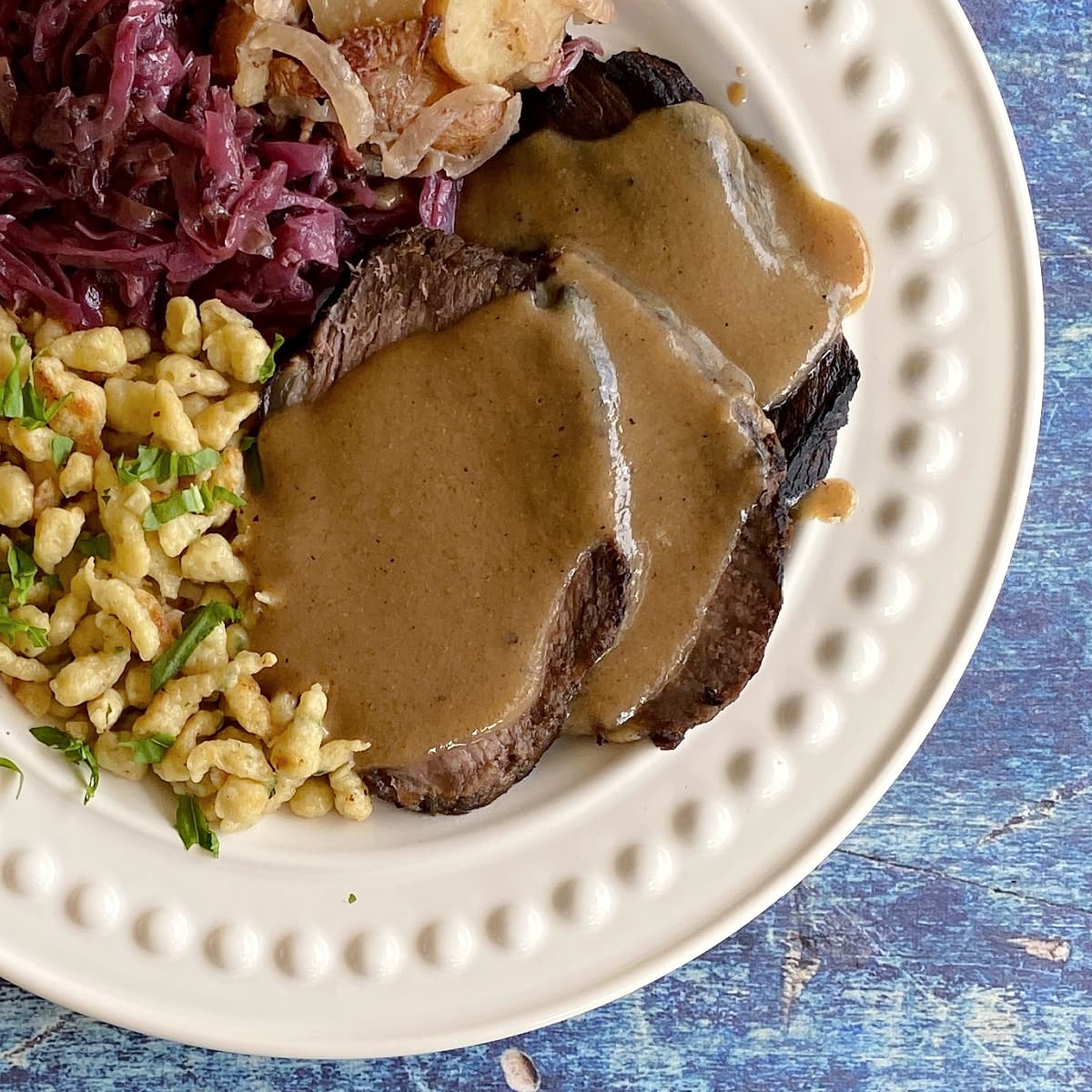
Jump to:
What's the Story on Sauerbraten?
Considered one of the national dishes of Germany, sauerbraten is true comfort food indulgence. Like pot roast recipes across the US, sauerbraten recipes in Germany vary from region to region. The sauerbraten recipe shared here reflects the hearty, rustic cooking traditions of Bavaria, the southeastern most region of Germany and home to Oktoberfest.
Essentially a braised pot roast, Bavarian-style sauerbraten uses simple ingredients and patience to transform a common beef roast into something quite remarkable and deeply satisfying.
Classic Sauerbraten is relatively easy to make, but it does take require some advance planning, as it must be marinated for at least 3 days - and preferably for up to a week. (In Germany, it is marinated up to two weeks!) Be reassured, though; it is totally worth the effort!
Gingersnap Gravy
Traditionally, Bavarian sauerbraten is accompanied by a slightly tangy, savory-sweet gingersnap gravy. The gingersnaps are added both for flavor and as a thickening agent. In Germany, Lebkuchen cookies are most often used for this purpose; however, in the US, gingersnap cookies make an easy substitute. (Lebkuchen means gingerbread.)
The last time we served sauerbraten, one of our guests who was new to German food was hesitant to try a gravy made with cookies. I explained that the ginger cookies are actually a way to thicken the gravy and add warm, spiced flavors to it all at the same time. That seemed to make more sense to her, and she ended up loving it! So there you go.
Sauerbraten Ingredients
What is the best cut of meat for Sauerbraten?
We use a 3½ to 4 pound beef rump roast, or bottom round. (This size fits perfectly in our 10-inch Dutch oven.) Other cuts that work well include boneless beef chuck roast, top round, or even brisket. (Germans are known to use many other meats for making sauerbraten; most notably, horse meat. That won’t be happening here.) If you avoid beef, sauerbraten can also be successfully made with a pork roast.
Sauerbraten is a special occasion, once-a-year kind of thing at our house; as such, we pay a visit to our local butcher to buy the roast. (Shout-out to Basics Meat Market for the beautiful rump roast pictured here!) The quality and service you receive at a knowledgeable butcher shop is well worth the few extra pennies it may cost.
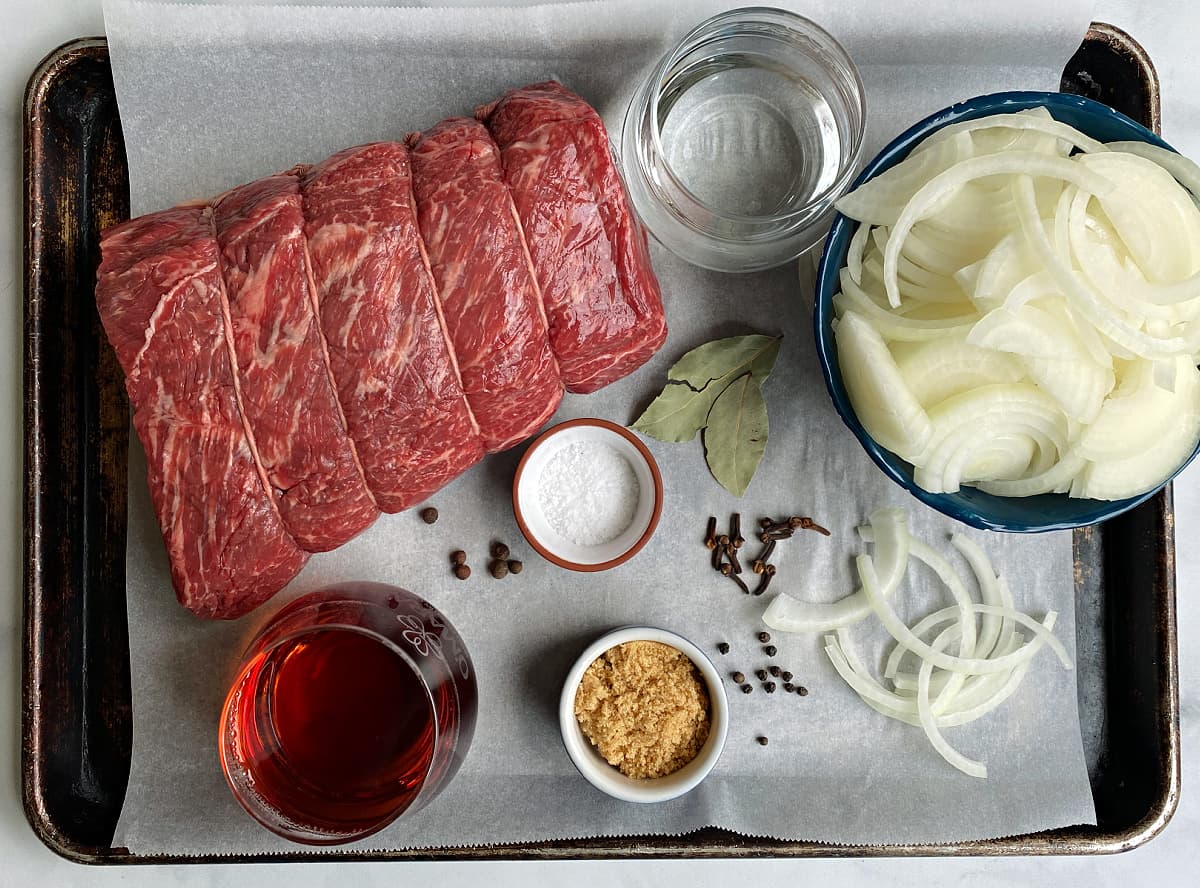
- Meat: Ideally, look for high quality, grass fed beef rump roast (i.e., bottom round oven roast, bottom round pot roast, bottom round rump roast, round roast). We suggest visiting your local butcher shop for this; they will be able to help you choose the best cut for your needs.
- Onions: For vegetables for the marinade, we choose to keep things simple and stick with onions, of which you can use just about any variety. You can also add other aromatic vegetables to the marinade. Carrots, celery, and leeks are all good additions.
- Red wine vinegar: You can use apple cider vinegar, or equal parts wine and vinegar, in place of the red wine vinegar.
- Gingersnaps: If you are lucky enough to have a German bakery or store nearby, use Lebkuchen cookies. Otherwise, use a good quality gingersnap.
- Juniper berries: Common in German cooking, juniper berries to are a fragrant, aromatic spice that comes from the juniper bush. They have a pleasant, piney flavor that is sometimes compared to citrusy rosemary. They can, however, be difficult to find, and are optional to this recipe.
How to Make Braised Sauerbraten with Gingersnap Gravy
Marinate the Roast
Do this step 3-7 days ahead of time.
Some people prefer more marinade for their roast. If this is you, just double the marinade amounts when you make it.
In medium saucepan, combine the marinade ingredients: onions, red wine vinegar, water, brown sugar, kosher salt, cloves, juniper berries (optional), peppercorns, allspice, bay leaves.
Bring to a boil, and then reduce heat and simmer for 10 minutes. Allow marinade to cool completely.
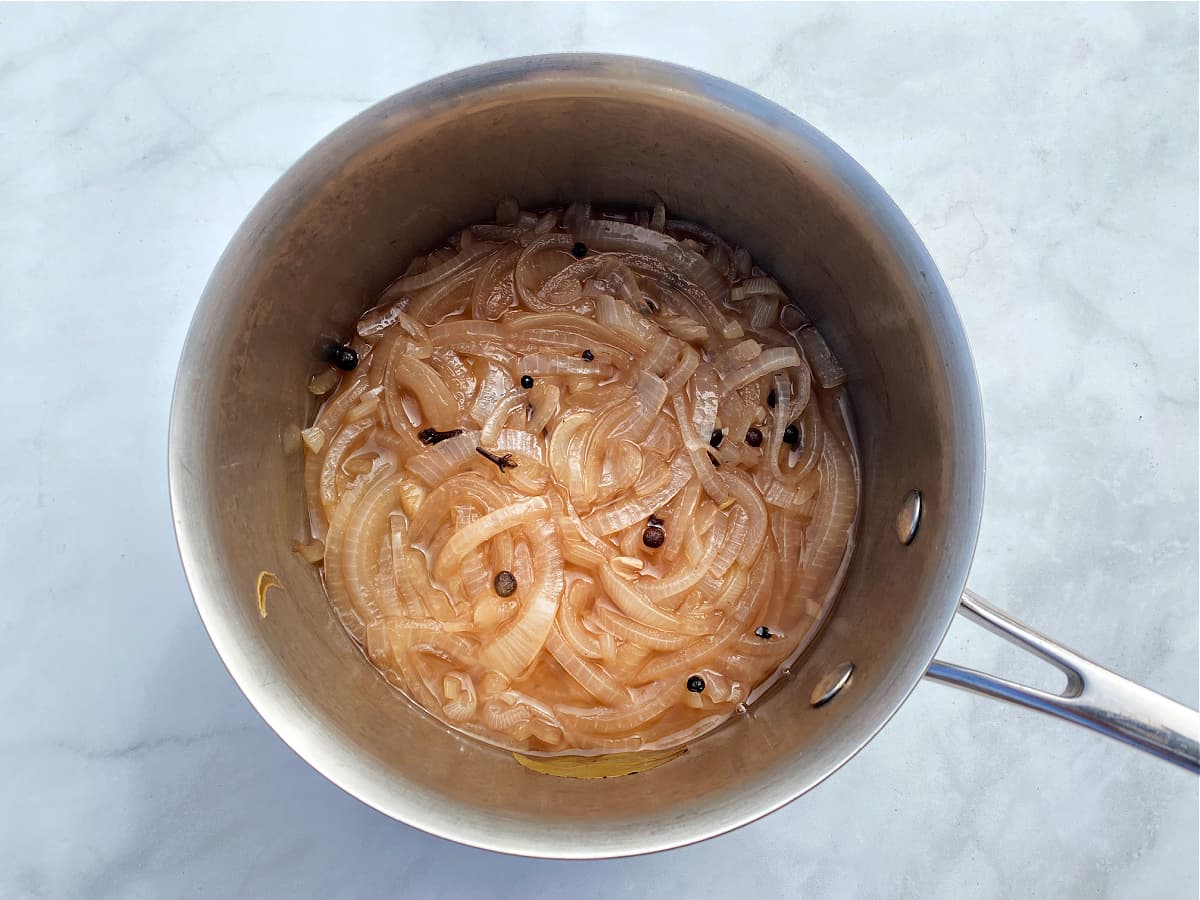
To marinate the roast, find a vessel that it fits it with just a little wiggle room and pour the cooled marinade over the top. Ideally, the roast should be completely submerged in marinade.
Alternately, use a vacuum-sealer to seal the roast and marinade together. (This is our preferred method of marinating anything.)
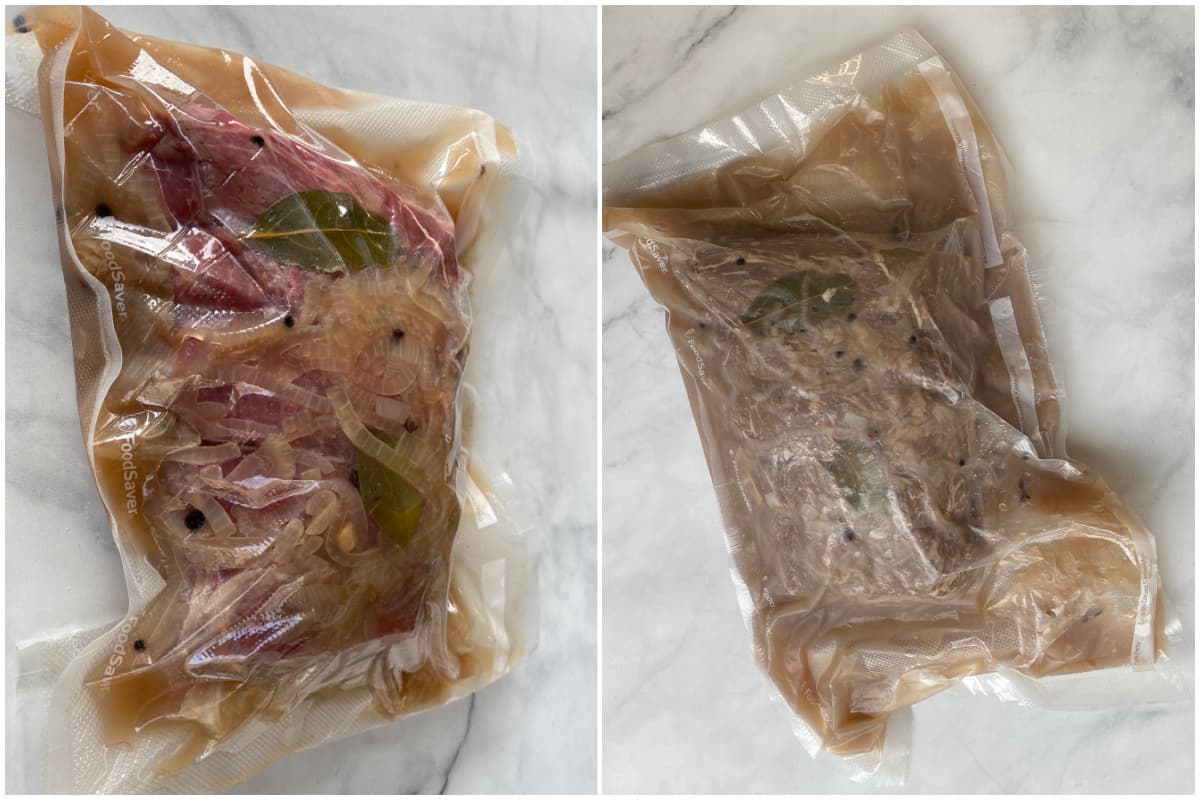
Using a vacuum bag keeps the roast completely encased in marinade, and takes up less room in the fridge, too! (A Ziploc bag will also work for this step, but we prefer to the security of the vacuum seal.)
Refrigerate prepared meat for 3 to 7 days, turning it in the marinade a couple times a day.
We place the roast in the front of the fridge and make a habit of turning it whenever we open the door.
Oven-Braise the Roast
Preheat oven to 325°F (164 °C).
Remove beef from marinade and use paper towels to pat it dry.
Use a mesh strainer to remove the solids from the marinade. Discard the solids and reserve the strained marinade.
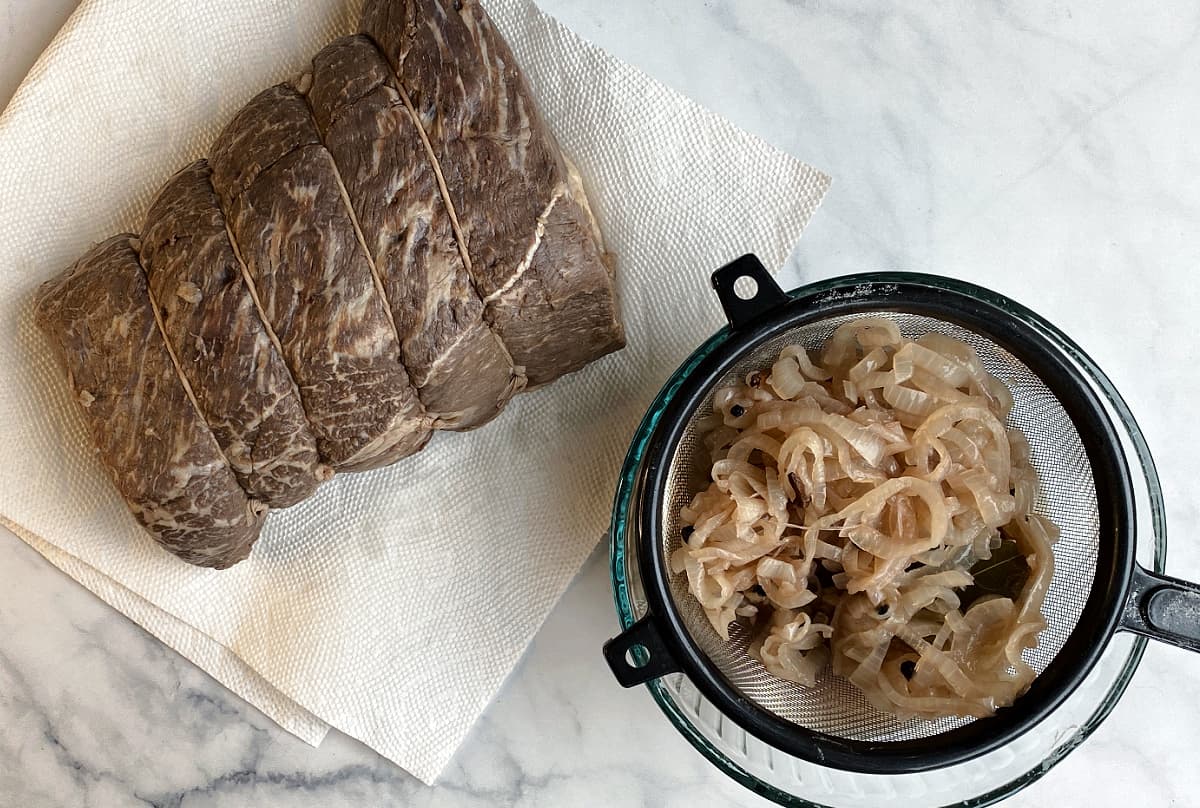
Preheat a dry Dutch oven on stovetop on HIGH for 5 minutes.
Add enough vegetable oil to the Dutch oven to generously cover the bottom; about 3 tablespoons.
Using tongs, carefully brown prepared roast on all sides, about 2-3 minutes per side, until it is uniformly deep golden brown. This should take about 15 minutes.
Remove browned roast from Dutch oven and place on a plate.
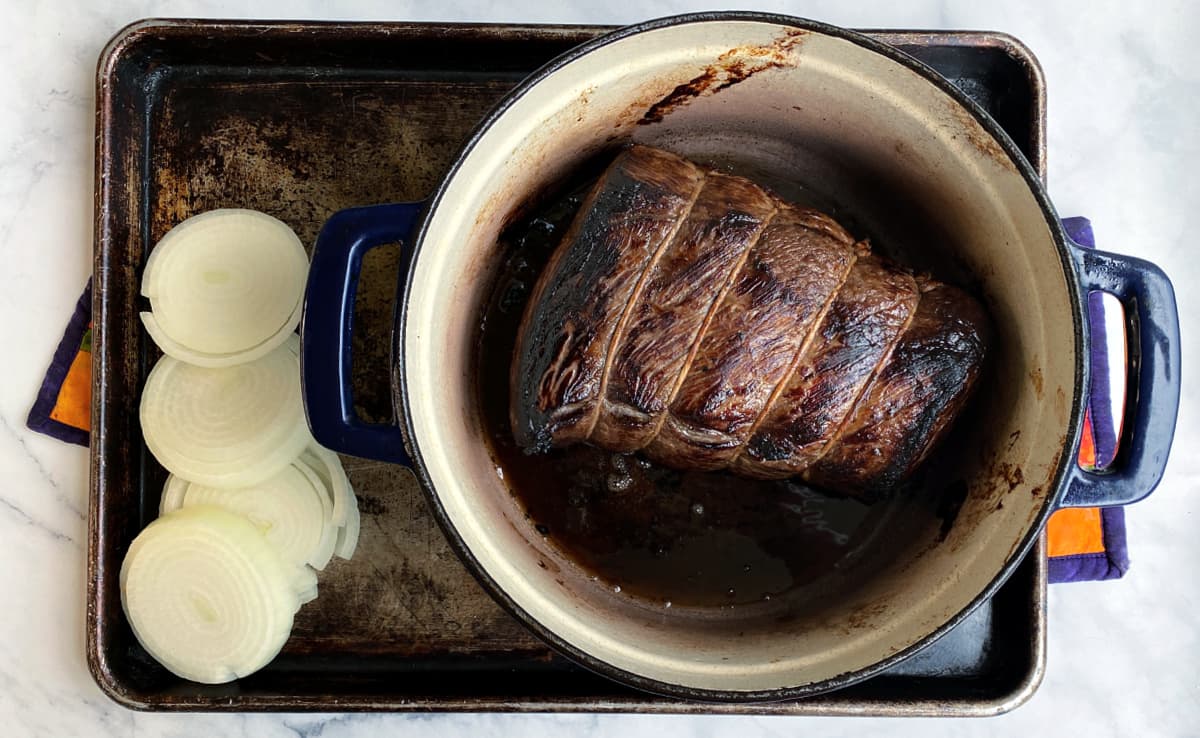
Reduce heat under Dutch oven to MEDIUM-HIGH.
Add slices of onion to the hot pan and allow the rings to fry for about 3-4 minutes on each side, enough to soften. Stir as necessary.
Place browned roast on top of onions.

Pour reserve marinade over roast. Cover Dutch oven with aluminum foil and place in oven.
Do not use the Dutch oven lid; doing so concentrates too much heat and cooks the meat too fast, resulting in a less tender roast.
A 3½-4 pound marinated roast will take about 1¼ to 1¾ hours to cook to Medium-Rare. Begin checking it with an instant read meat thermometer at the 1-hour mark.
How to Use a Meat Thermometer: Insert a meat thermometer horizontally into the thickest part of the roast. Avoid resting the thermometer in fat or touching bone. Leave the meat thermometer in the roast for about 15 seconds.
Note that the longer you marinate the meat, the less time it takes to cook.

When the roast reaches the desired internal temperature, remove it from the oven and place it on a platter. (We use a cast iron skillet.)
Loosely tent the roast with aluminum foil and allow it to stand. The temperature will rise another 10-15 degrees after the roast has been removed from the oven.
Remove the roast to a platter and tent when the internal temperature reaches:
- Rare: Remove from oven at 125°F [52°C]. Temperature will rise to 135°F [57°C] in 10-15 minutes.
- Medium Rare: Remove from oven at 130°F [55°C]. Temperature will rise to 140°F [60°C] in 10-15 minutes.
- Medium: Remove from oven at 140°F [60°C]. Temperature will rise to 150°F [65°C] in 10-15 minutes.
- Medium Well: Remove from oven at 145°F [63°C]. Temperature will rise to 155°F [68°C] in 10-15 minutes.
- Well Done: For a fall-apart tender, well done roast, prepare the sauerbraten as outlined in the recipe, but instead of cooking it in the oven, cook it in a slow cooker on low for 6-8 hours.
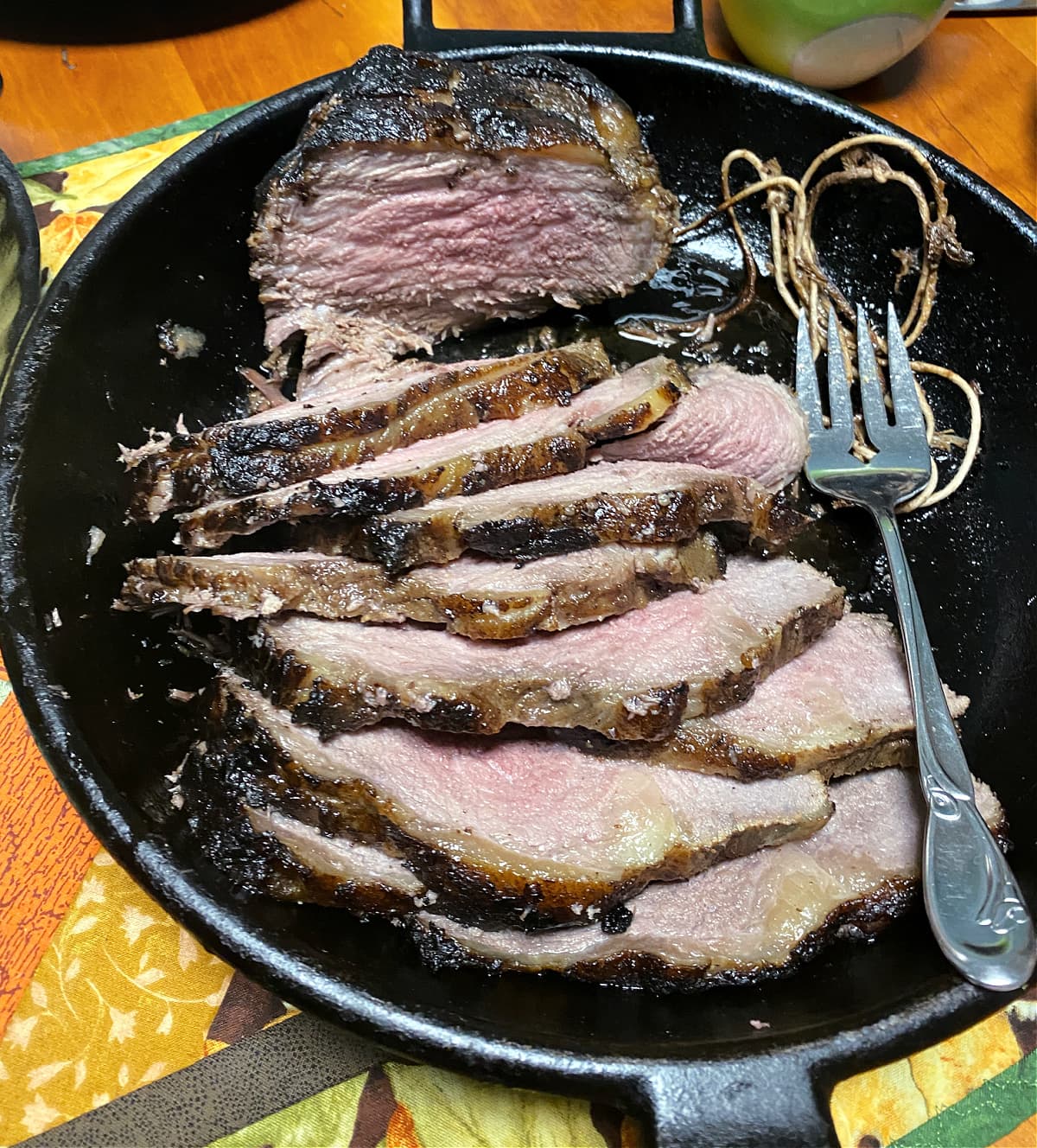
Current USDA/FDA Meat Roasting Guidelines: The USDA does not recommend cooking beef at oven temperatures lower than 325°F (164 °C) because these foods could remain in the "Danger Zone" (temperatures of 40° to 140°F) too long. Bacteria which may be present on these foods multiply rapidly at these temperatures. Cook all raw beef to a minimum internal temperature of 145°F (63°C) as measured with a food thermometer.
Gingersnap Gravy
Strain the drippings from the bottom of the Dutch oven. Discard the solids.
Return the drippings to the Dutch oven. Place the Dutch oven back on the stovetop and heat over MEDIUM-LOW.
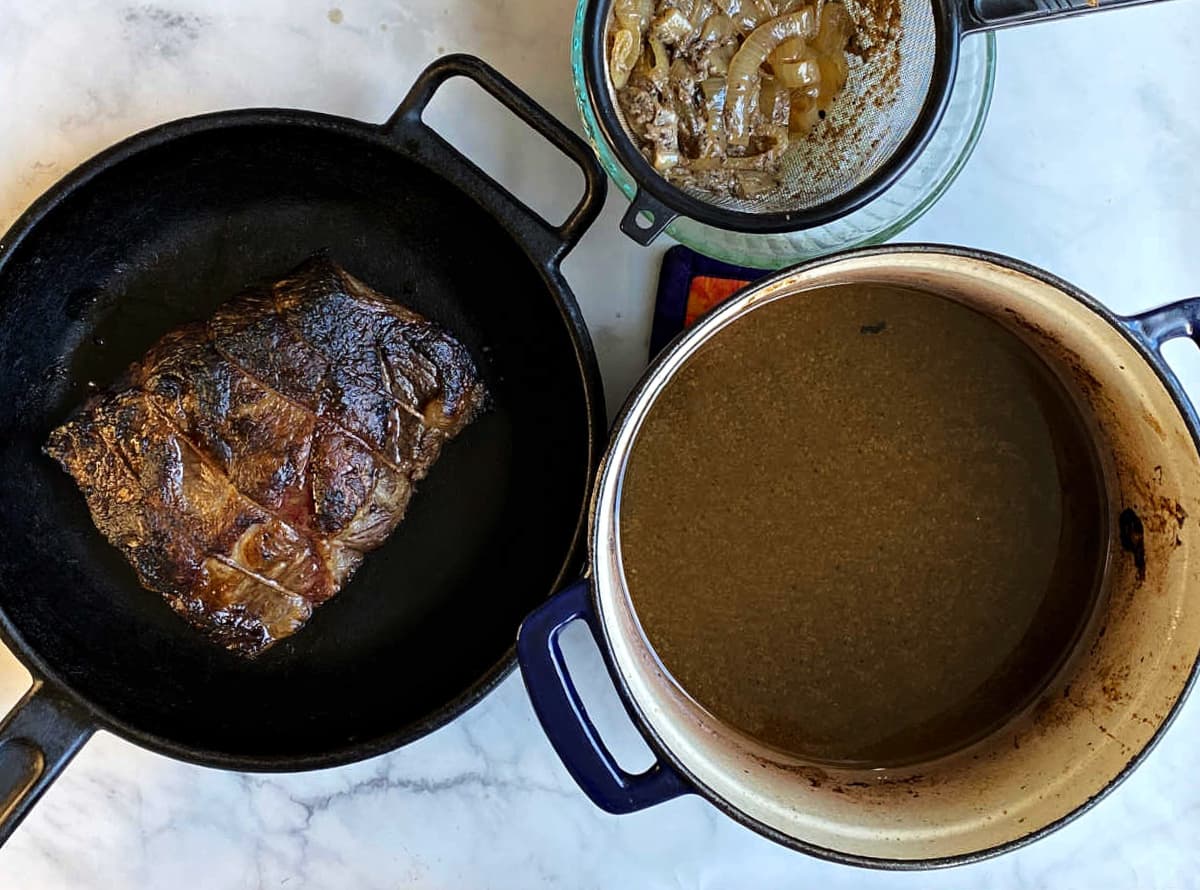
Add honey and gingersnap crumbs to drippings and whisk until they completely dissolve.

Continue stirring until the gingersnap gravy begins to simmer and thicken. If it seems too thick, add a little more water or some beef broth. If it seems too thin, add some more gingersnap crumbs.
Serve sliced sauerbraten with warm gingersnap gravy on the side.
Substitutions
Beef: If you avoid beef, sauerbraten can also be successfully made with a pork roast.
Juniper berries: You can substitute a sprig of rosemary and a small slice of orange peel into the marinade in place of the juniper berries, or you can leave them out entirely.
Equipment
When making sauerbraten, I recommend using an enameled cast iron Dutch oven. A Dutch oven allows you to sauté and simmer on the stovetop, and the enameled (i.e., glass) surface won't react to ingredients. A good Dutch oven promotes even heating and has great heat retention, and goes from stovetop to oven to table with ease.
I also highly recommend an instant-read thermometer. It is hands-down the best way to check the doneness of the roasts.
Storage
To store sauerbraten leftovers, first allow the roast to cool completely.
Refrigerator: Store the cooked, cooled sauerbraten along with any sauce in a closed container in the fridge for 4-5 days. Store your cooked and cooled sauerbraten and sauce in an airtight container in the refrigerator for up to 4 days.
Freezer: Freeze cooked, cooled sauerbraten and sauce in a freezer-safe, airtight container or resealable freezer bag. Use within 3 months to retain the best flavor and texture.
Top Tip: The "Best" Way to Cook Sauerbraten
The tenderness of your sauerbraten is dependent upon both the quality of your roast, and the time and temperature at which it is cooked. Please note that we don't cook our sauerbraten to "fall apart tender." We usually buy a good-quality roast for Oktoberfest, and prefer to cook it to melty fork-tender, but still sliceable.
Braising the roast in the oven is our preferred method for cooking sauerbraten. I don't know if it is the "best" way, but it the way that works best for us.
We’ve made sauerbraten in the slow-cooker on numerous occasions, and while it comes out tasty and delicious, it is always uniformly too well done. Mr B and I prefer our roasts - sauerbraten or otherwise - to be medium to medium rare, and nuances in temperature are much easier to achieve by braising it in the oven.
I am positive that there are folks out there who prefer to make sauerbraten in a slow cooker, or their Instant Pot (or even on the stove top if you are an old-school Deutscher Koch*). If this is you, go for it!
For a fall-apart tender, well-done roast: Prepare the sauerbraten recipe as outlined, but instead of cooking it in the oven, cook it in a slow cooker on low for 6-8 hours.
To cook the roast in a slow cooker, transfer it to the slow cooker after you have fried the onions, along with the reserve marinade, and cook on LOW for 6-8 hours.
*translation: German cook
FAQ
Braising is a two-part cooking method that starts with pan-searing, after which meat is slow-cooked in a flavorful liquid.
The braising process effectively tenderizes the meat, dissolving collagen and connective tissue into gelatin and infusing flavor throughout. Usually done in a Dutch oven or slow cooker, braising can transform even a tough cut of meat into a fork-tender feast.
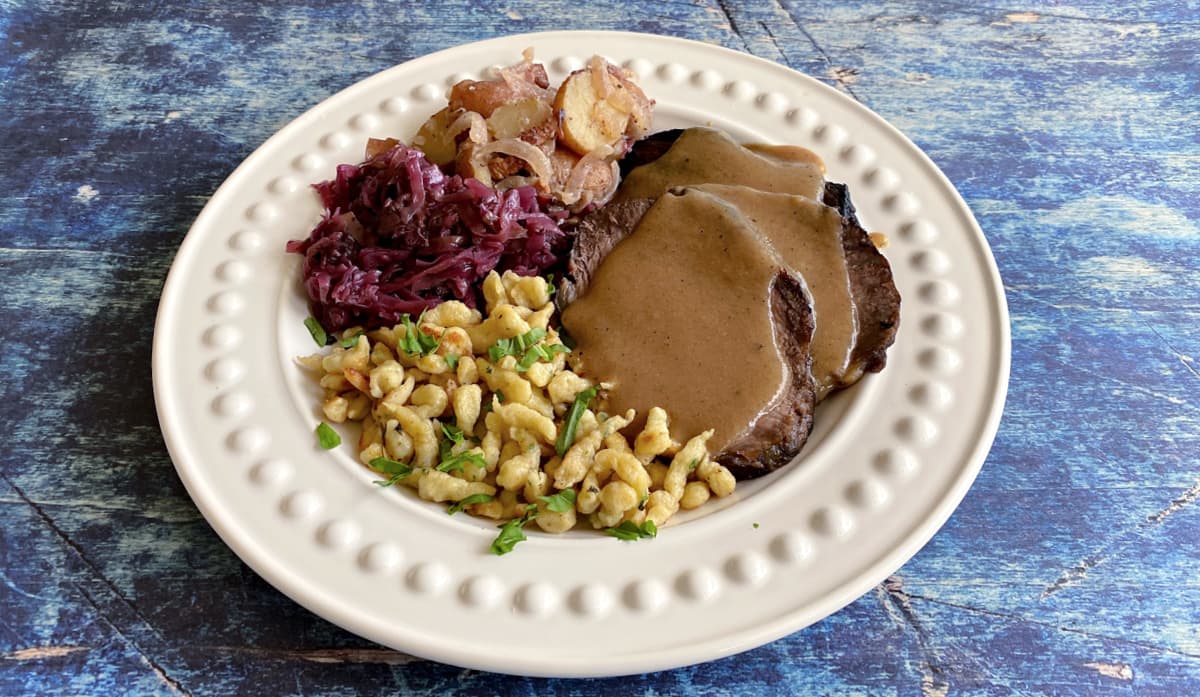
More German Recipes
Craving that elusive dark rye bread flavor you can't buy in a store? Try our rich, aromatic, molasses-infused German Dark Rye Bread!
What to Serve with Sauerbraten
Our annual family Oktoberfest feast traditionally includes Sauerbraten, Spaetzle, Rotkohl, and Kartoffelsalat! (And Apfelstrudel for dessert, of course!) Other dishes that pair well with Sauerbraten include:
- German potato dumplings
- Mashed potatoes
- Green beans
- Asparagus
- Roast vegetables
- Buttered noodles
- Potato pancakes

Want More Free Recipes?
Subscribe to our newsletter to get family-friendly recipes and cozy living ideas in your inbox each week!
Find us on Instagram, Pinterest, and Facebook, too.

Traditional German Sauerbraten
Equipment
Ingredients
- 3½ - 4 pound rump roast i.e., bottom round roast
Sauerbraten Marinade
- 2 large onions
- 1 cup red wine vinegar
- 1 cup water
- 4 teaspoons brown sugar
- 2½ teaspoons kosher salt
- 10 whole cloves
- 10 whole juniper berries optional
- 10 whole peppercorns
- 5 whole allspice
- 2 whole bay leaves
Roast Prep
- 1 large onion sliced into thick rings
- 2-3 tablespoons vegetable oil or bacon grease
- ½ teaspoon kosher salt
- ¼ teaspoon freshly ground pepper
Gingersnap Gravy
- ⅔ cup gingersnap cookie crumbs
- 1 tablespoon honey
- Pan drippings
Instructions
Marinate Roast
- In medium saucepan, combine the marinade ingredients: onions, red wine vinegar, water, brown sugar, kosher salt, cloves, juniper berries (optional), peppercorns, allspice, bay leaves.Bring to a boil, and then reduce heat and simmer for 10 minutes. Allow marinade to cool completely.
- To marinate the roast, find a vessel that it fits it with just a little wiggle room and pour the cooled marinade over the top. Ideally, the roast should be completely submerged in marinade.Alternately, use a vacuum-sealer to seal the roast and marinade together. (This is our preferred method of marinating anything.)
- Refrigerate prepared meat for 3 to 7 days, turning it in the marinade a couple times a day.
Oven-Braise the Roast
- Preheat oven to 325°F [164 °C].Remove beef from marinade and use paper towels to pat it dry.Use a mesh strainer to remove the solids from the marinade. Discard the solids and reserve the strained marinade.
- Preheat a dry Dutch oven on stovetop on HIGH for 5 minutes.Add enough vegetable oil to the Dutch oven to generously cover the bottom; about 3 tablespoons.
- Brown prepared roast on all sides, about 2-3 minutes per side, until it is uniformly deep golden brown. This should take about 15 minutes.Remove browned roast from Dutch oven and place on a plate.
- Reduce heat under Dutch oven to MEDIUM-HIGH.Add slices of onion to the hot pan and allow the rings to fry for about 3-4 minutes on each side, enough to soften. Stir as necessary.Place browned roast on top of onions.
- Pour reserve marinade over roast. Cover Dutch oven with aluminum foil and place in oven.Do not use the Dutch oven lid; doing so concentrates too much heat, and cooks the meat too fast, resulting in a less-tender roast.Begin checking roast with an instant read meat thermometer at the 1-hour mark. (A 3½-4 pound marinated roast will take about 1¼ to 1¾ hours to cook to Medium-Rare.)
- Remove the roast to a platter when the internal temperature reaches 130°F [55°C] for Medium Rare. (See NOTES below for additional cooking times/temperatures.)Loosely tent the roast with aluminum foil and allow to stand. The temperature will rise another 10-15 degrees after the roast has been removed from the oven.
Make Gingersnap Gravy
- Strain the drippings from the bottom of the Dutch oven. Discard solids.Return the drippings to the Dutch oven.Place the Dutch oven back on the stovetop and heat over MEDUIM-LOW.Add honey and gingersnap crumbs to drippings and whisk until they completely dissolve.
- Continue stirring until the gingersnap gravy begins to simmer and thicken. If the gravy seems too thick, add a little more water or some beef broth. If the gravy seems toe thin, add some more gingersnap crumbs.
- Serve sliced sauerbraten with warm gravy.
Notes
Internal Temperatures
- Rare: Remove from oven at 125°F [52°C]. Temperature will rise to 135°F [57°C] in 10-15 minutes.
- Medium Rare: Remove from oven at 130°F [55°C]. Temperature will rise to 140°F [60°C] in 10-15 minutes.
- Medium: Remove from oven at 140°F [60°C]. Temperature will rise to 150°F [65°C] in 10-15 minutes.
- Medium Well: Remove from oven at 145°F [63°C]. Temperature will rise to 155°F [68°C] in 10-15 minutes.
- Well Done: For a fall-apart tender, well done roast, prepare the sauerbraten as outlined in the recipe, but instead of cooking it in the oven, cook it in a slow cooker on low for 6-8 hours.
Alternate Cooking Method - SLOW COOKER To cook the roast in a slow cooker, transfer it to the slow cooker after you have fried the onions (Step 4, under "Oven-braise the Roast"), along with the fried onions and reserve marinade, and cook on LOW for 6-8 hours.
Nutrition
This website provides approximate nutrition information for convenience and as a courtesy only. You are solely responsible for ensuring that any nutritional information provided is accurate, complete, and useful.
Thank you for visiting the Good Hearted Woman. Remember to bookmark this site, and come back soon!
Food Safety
- Cook beef roasts to a minimum temperature of 135°F (57°C).
- Do not use the same utensils on cooked food that previously touched raw meat.
- Always wash hands after touching raw meat.
- Don't leave food sitting out at room temperature for extended periods.
- Never leave cooking food unattended.
- Use oils with high smoking point to avoid harmful compounds.
- Always have good ventilation when using a gas stove.
- Store food in suitable, covered containers.


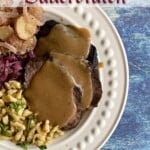
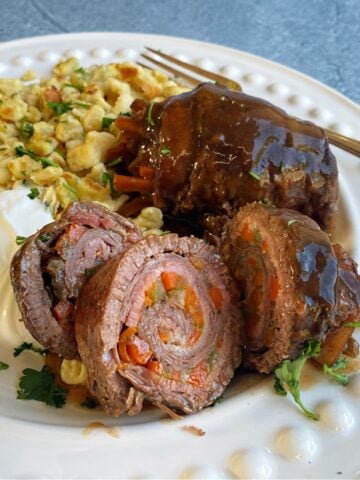

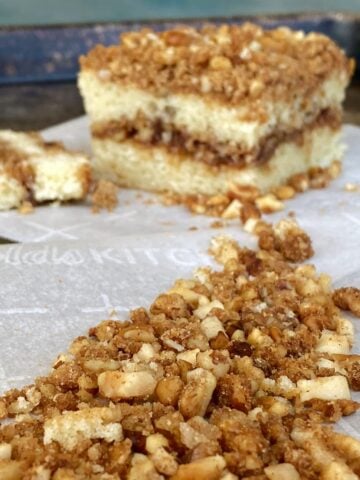

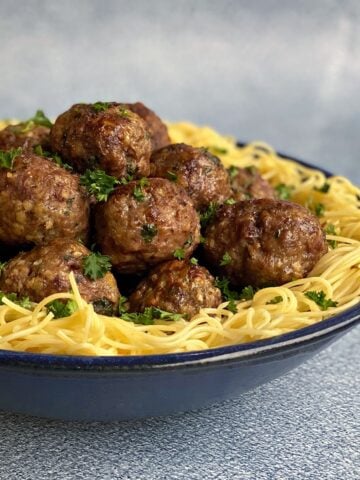
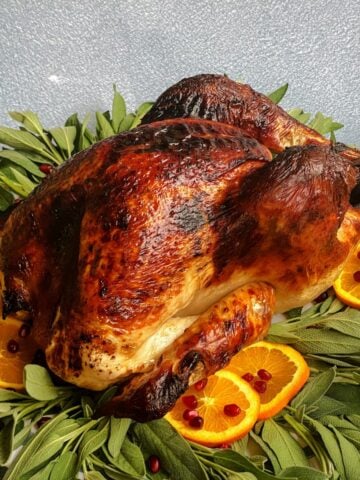
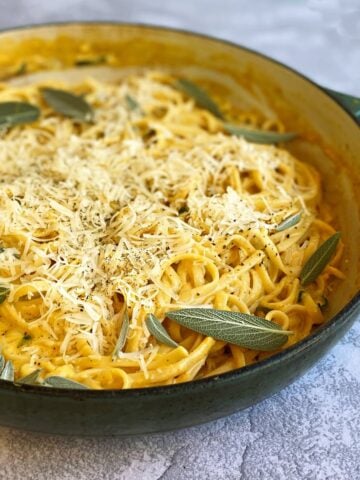

Tracy Bird says
Can this work with a thick flat cut? Couldn't find a chunk of roast in my town. Technique of marinade and slow cook seems targeted for tougher, muscular cuts and would slice nicely, firm but tender...some top cut might just fall apart?
Renée B. says
It should work on any cut; it just may be more be closer to fall-apart than fork-tender. Still delicious!
Denise says
Not sure about this recipe. Normally there is much more marinating liquid and much more cooking time, like 3 hours to make sure the roast is very tender. Is this enough liquid for cooking and making a gravy and is 1-1/2 to 2 hours enough to ensure a “fall apart” tender roast?
Renée says
We as noted in the post, we don't cook our sauerbraten to "fall apart tender." We usually buy a really good roast for Oktoberfest, and prefer it fork-tender, melty, and still sliceable; about medium-rare.
You can certainly cook it longer in the oven if you prefer it more done; or, for a really fall-apart sauerbraten, cook it in the slow cooker on low for 7-8 hours. (I used to cook sauerbraten in the slow cooker, but we didn't like how well done it got. This is definitely a personal preference.)
We always have plenty of cooking liquid leftover for gravy.
Denise says
Thanks very much for the response. I did read over the post again and decided to go with a longer time in the oven instead of using the slow cooker. Very delicious although I decided to go with additional marinade for the extra gravy and less ginger snaps. Thank you!
Renée B. says
You are most welcome!
Dannii says
The sweet gravy sounds amazing. I can't wait to try it!
Anjali says
This looks like such a hearty and comforting recipe!! I absolutely love your idea of the gingersnap gravy - I think that'll take this roast to a whole other level! Yum!
Renée says
The gingersnap gravy is so uniquely amazing - it really does elevate the roast!
veenaazmanov says
Love your recipes. Bursting with flavors and looks delicious and tempting.
Renée says
Thanks so much!
Mirlene says
When you talk about a 7 day marination, I'm guaranteed the roast will tastes the best! Love the addition of the sweet gravy to top off!
Renée says
That gingersnap gravy is a real game-changer!
Chenée says
This looks amazing! I love the flavors in the marinade! So delicious!
Renée says
The marinade transforms the meat: it's really an amazing kitchen-science experiment!